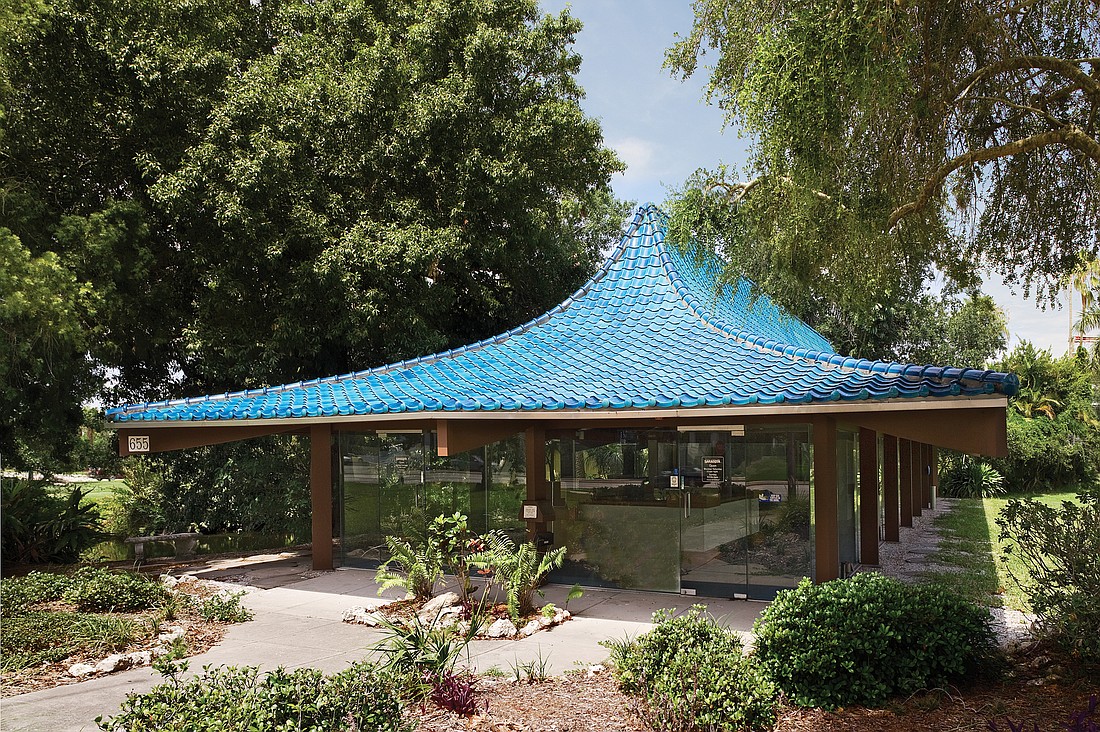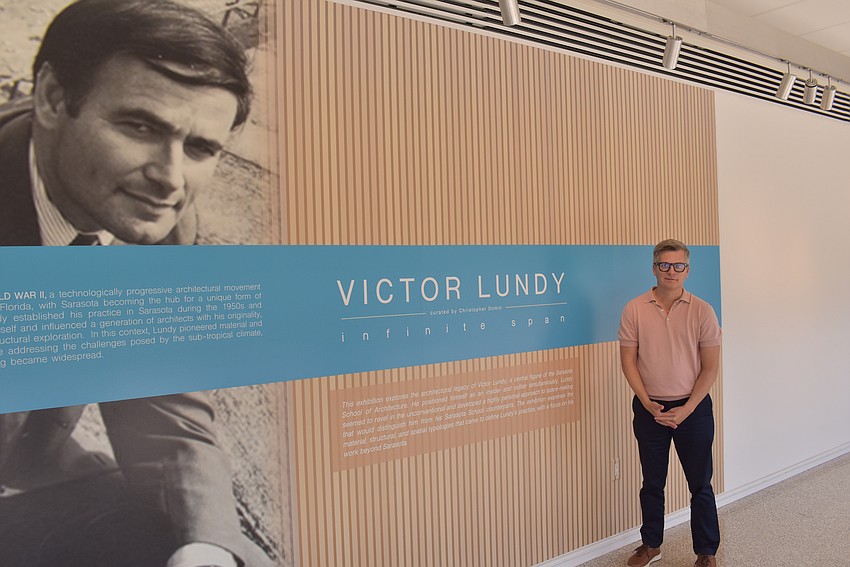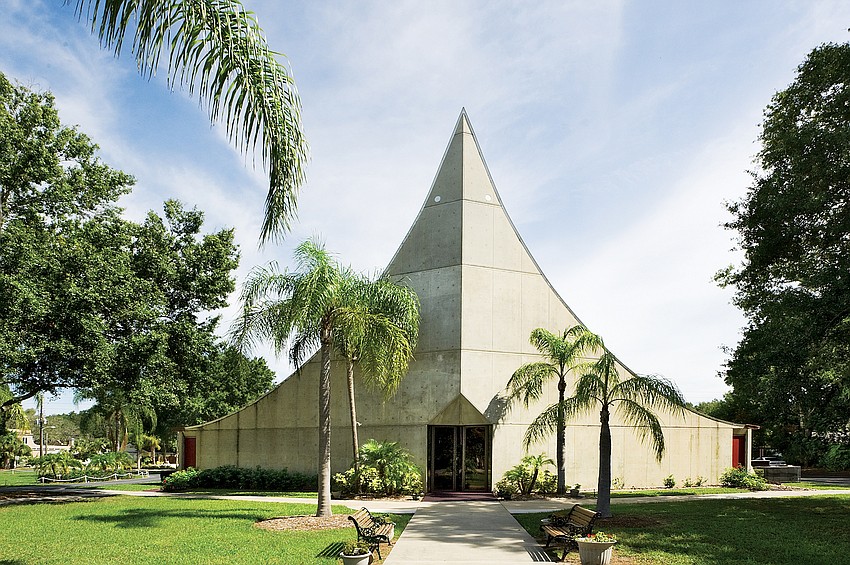- July 8, 2025
-
-
Loading

Loading

Victor Lundy, who designed such Sarasota landmarks as the Blue Pagoda Building, St. Paul Lutheran Church and Galloway's Furniture Showroom, died Nov. 4 at the age of 101.
News of Lundy’s death was posted on social media by the preservation group Docomomo U.S., which said the late designer was a “marvel in how architecture can uplift the spirit.”
Lundy was a leading member of the Sarasota School of Architecture, a group whose existence the self-proclaimed "wild man" was known to deny. The school, which includes such architectural luminaries as Ralph Twitchell, Paul Rudolph, Carl Abbott and Ralph and William Zimmerman, was part of a movement to build innovative homes, schools and churches in the post-World War II era.
Their designs, now referred to as Mid-Century Modern, were built in places like Sarasota, Palm Springs, California; New Canaan, Connecticut; and Columbus, Indiana, to name just a few.
Lundy was honored last year at Architecture Sarasota's 10th MOD Weekend. Several of his buildings are on the registry called "Moderns That Matter: Sarasota 100" recently compiled with input from the community by Architecture Sarasota President Morris (Marty) Hylton III and his team.
"Architecture Sarasota mourns the passing of Victor Alfred Lundy," Hylton said in a statement. "An architectural innovator, Lundy was a central figure in the early development of the Sarasota School of Architecture, a highly revered, environmentally responsive and transformative movement of modernist design adapted to South Florida's Gulf Coast."
In the waning days of Lundy's life, the kudos and awards were still rolling in. In its review of Sarasota Art Museum's recent exhibit, “Modern Masterpiece: Galloway's Furniture Showroom by Victor Lundy," The Wall Street Journal declared the Mid-Century Modern pavilion is to retail what “Notre Dame is to cathedrals."
The exhibition, a collaboration between SAM, owned by Ringling College of Art and Design, and Architecture Sarasota, closed on Oct. 27. Word is that Lundy was able to hear the praise in the WSJ article when it was read to him.
On the occasion of Lundy's 90th birthday, the Smithsonian Institution honored him. His Warm Mineral Springs Motel, built in North Port in 1958, is listed in the National Register of Historic Places.

Lundy was born Feb. 1,1923 to Russian immigrants in New York City.
He was studying architecture at New York University when he enlisted in the Army Specialized Training Program in 1942. He later joined the 104th Infantry Division and trained at Fort Jackson before being transferred to Cherbourg and Normandy, France. He moved to the Western Front in November 1944, where he was wounded.
His well-received sketches of his military training and wartime experience were donated to the Library of Congress in 2009.
After the war, Lundy earned bachelor's and master's degrees in architecture at Harvard, where he was influenced by Bauhaus founder Walter Gropius. He arrived in Sarasota in 1951, opened an architecture firm in 1954 and worked here until 1960.
"Upon relocating to Sarasota in 1954, the expressive and painterly drawings of Lundy would vividly capture the relationship of his architecture to the lush, natural context and form-defining light of subtropical Florida," Hylton said. "For example, Lundy created four paintings to secure the Sarasota Chamber of Commerce commission," a the building later nicknamed the "Blue Pagoda" for its distinctive blue tiles.
Other noteworthy structures designed by Lundy include "bubble pavilions" for the New York World's Fair of 1964-65; the U.S. Tax Court Building in Washington, D.C. (1974) and the Austin Centre and One Congress Plaza in Austin, Texas (1986-87).
Lundy met his future wife, Anstis Burwell, a fellow artist, in 1955 at an architecture conference in California. They got married in 1960 and moved to New York City before relocating to Houston in the 1970s.
The Lundys had two sons, Nicholas and Mark. Anstis Burwell Lundy, who died in 2009, is given credit for introducing her husband to the natural beauty of Colorado, where they built a home called Lundy House in Aspen.

In his Sarasota buildings, Lundy used wood and glass to create majestic structures. St. Paul and the Blue Pagoda featured sloping roofs while Galloway's Furniture Showroom was a circular palace of wood and glass.
"Lundy’s buildings often rely on simple, symmetrical plans based on pure geometries that bely the complex sections and spaces made possible by the laminated wood structural systems," Hylton noted.
The Blue Pagoda is now the welcome center at The Bay, Sarasota's waterfront park along Tamiami Trail.
Lundy designed three buildings on the campus of St. Paul Lutheran Church, at 2256 Bahia Vista St. from 1958-69. The church's education building was recently renovated at a cost of $775,000.
Most longtime Sarasota residents remember Galloway's Furniture Showroom from its incarnation as an optical store in 1980s. It was built in 1959 for a Florida furniture manufacturer and closed five years later. It still stands on the grounds of SAM, housed in the old Sarasota High School building.
Ringling College acquired the vacant building because of its proximity to the contemporary art museum, which currently uses it for storage. Designs for possible future uses of the building were part of the recent exhibition.
Lundy's legacy and his lasting imprint on Sarasota will be recognized at this year's MOD Weekend, which Architecture Sarasota is hosting from Nov. 14-17. For more information, visit ArchitectureSarasota.org.